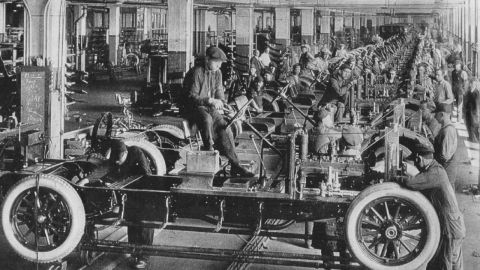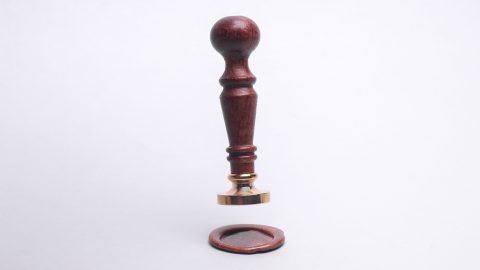Great headline: Dallas, Arlington pursuing College Football Hall of Fame, but Indiana museum say it’s staying put.
Apparently two municipalities are rivals in courting the College Football HoF, each offering premium sites (in Dallas, next to the new convention center, in Arlington, adjacent to the Cowboys’ new stadium.) Isn’t this wonderful? Don’t you wish it were trend—that museums were seen as such hot commodities that they were wooed by various communities seeking to lure them to a new home?
And why not? It might be a better solution than what often happens today, when museums struggle to find a strategy for sustainability in a city where they just don’t seem to fit. Take, for example, Washington DC’s Corcoran Gallery. I love the Corcoran. It’s a great museum with great collections. However, it’s located in a city blessed with incomparable museums, many of which offer free admission (and many of which are subsidized by the federal government.) As a result, it has struggled financially for decades.
Attempting to solve this problem the Corcoran has tried several strategies, including, most recently, staff layoffs. The most creative was an aborted bid for distinction via an addition by Frank Gehry. (I admit I was rooting for this—the dissonance provoked by one of Gehry’s signature piles of wet noodles, rendered in sheet metal, standing practically across the street from the Second Empire wedding cake that is the Old Executive Office Building was irresistible.) In the public debate that followed the cancellation of those plans, one of the proposals fielded by a member of the public was that the Corcoran become, primarily, a museum of photography. The reasoning was (to paraphrase only slightly) “because Washington doesn’t have one of those yet.”
Don’t get me wrong, I’m all for collections planning (in fact, I wrote “the book” on it), but seriously proposing to deaccession much of a glorious collection to force the museum to fit an empty cultural niche? Oh, the indignity.
I think it makes way more sense to move the museum to a niche that it already fits. I’ve already written about the fact that museums may need to be portable in the future. They may be forced to move for ecological reasons, such as rising sea levels, or for demographic reasons, such as the need for an ethnically specific museum founded in the city to follow its community to the suburbs in the third generation. So why not economics? Whether it is a museum in a formerly wealthy city like Detroit that is no longer able to support all the cultural organizations founded in its heyday, or a museum which is the weakest player in an oversaturated market such as in DC, there may be a case for simply picking up stakes and moving.
And there will be no shortage of vital new communities ready to receive them. Immigration, shifting patterns of economic growth, and changes to our basic infrastructure of energy, food and transportation will create new urban centers and cause some American cities to expand dramatically at the expense of others. These growing centers of population will need museums! Moving an established museum with a sound infrastructure (good collections, quality programming, solid management) might be a better that the usual “hey kids, let’s start a museum!” method of filling emerging niches.
There are precedents in other sectors. Bidding wars for sports teams are so common that it’s sometimes hard to remember whom one should be cheering for. And annual attendance at US museums is higher than all major league sporting events combined (I love this statistic.) So museums should be seen as equally desirable economic drivers. And what about institutes of higher learning? When James Buchanan Duke wanted a university named after his father he didn’t found one, dammit. He did it the old fashioned way—he bought one. (Though he did not insist that it relocate—it was, conveniently, already situated next to his tobacco warehouses).
Indeed, there are examples of museums that have moved, or considered moving, to entirely different communities. Before it closed in 1994, the Terra Museum of American Art, in Chicago, flirted with a move to Washington, DC. On the other hand, this proposal wasn’t impelled by any crying need for more art museums in the nation’s capital (or I wouldn’t be blogging about the Corcoran.) Rumor had it that the idea was motivated by the founder’s widow’s desire to establish her presence in the Washington social scene. Perhaps a better example is the Heye Foundation’s Museum of the American Indian, which Ross Perot offered to buy and move from New York City (where the collection was moldering in unsuitable storage conditions) to Dallas. Instead the collection became the core of the National Museum of the American Indian and moved to…you guessed it, Washington DC. (Am I seeing some patterns here? DC and Dallas as gravitational wells of museum attraction?)
Of course it’s not that simple. For one thing, we seem to have a simple mental block against considering museums as portable cultural assets. They seem so, well, monumental, so immobile. It might be no coincidence that the news story that leads this post is about a sports museum—perhaps sports collections take on some of the free-market ways associated with their subject matter. Beyond cognitive barriers, some museums truly are place specific—you can’t just port the local historical society to a different state because it can’t balance its budget. And there may be other obligations to place and to community—it could be more responsible for a museum to downsize to fit a contracted economic niche than to abandon its old constituency for one that can offer more money.
But still, as we think broadly about the future, the default assumption that all museums are tied to their present location is worth questioning. Try the exercise in your own institution. What is the projected future of your community, its needs and economic capacity? What is the projected future size, and focus, of your museum? Will you and your current audience and supporters continue to be a good fit? And, if you were free to pick any place in the US to be situated, what do you think is your natural home? Now…feel free to solicit bids.









A bit of a tangential comment about that statistic regarding museum attendance versus professional sports team attendance … it might make some museum people feel good, but it’s a bit misleading.
When I see people outside major museums scalping admissions tickets everyday … then the comparative numbers game will be more interesting.
There are many, many museums, but, comparatively speaking, not nearly as many pro sports teams.
Similarly, museums have many, many more open “attendance days” than sports teams — even baseball teams.
I’d like “future thinking” museums and museum organizations to concretely strategize (as opposed to just philosophize) on how to engender “museum fans” rather than just “museum visitors.” Because in that regard, sports teams have left museums far, far behind.
Excellent post. A few semi-random thoughts:
1. At any given time, a significant portion of this country’s unemployment could be solved if people would just move. But they don’t (or in some cases, can’t). For reasons more sociological than economic. I suspect the same holds true for museums. (“This museum IS Chicago” and similar thoughts.)
2. Expand your discussion beyond sports teams. This type of competition happens all the time in the business world. Recall the loud and public fight over who would get the Boeing HQ, eventually won by Chicago. I used to work for the State of Georgia in their office in Brussels. All day long we tried to convince EU companies to build their facilities in Georgia. If museums would make themselves known to such municipal and state offices and indicate their willingness to move, perhaps some deals would be made.
3. MLB and the NFL have done a great job of convincing states and municipalities that they are money-makers and worthy of tax money. I, for one, think that is a load of bull. Stadia are total sink-holes in my opinion. That said, perhaps AAM should learn from the sports leagues and do some studies that show museums are money makers.
-Carl Oberg, http://overtonsarrow.wordpress.com/
I always enjoy a walk around the museum, all the historical value makes me feed my knowledge and i feel that i grow up like a person. I like to try what i want to prove. this is when i buy viagra for my husband. whenever i have a doubt, i mus to satisfy my curiosity.